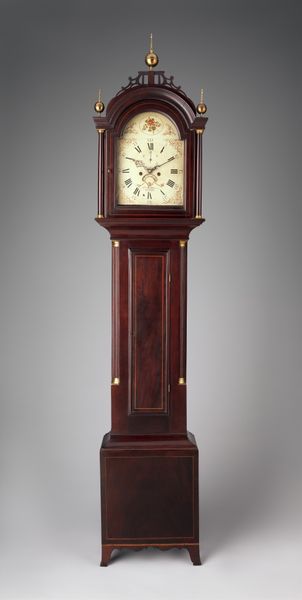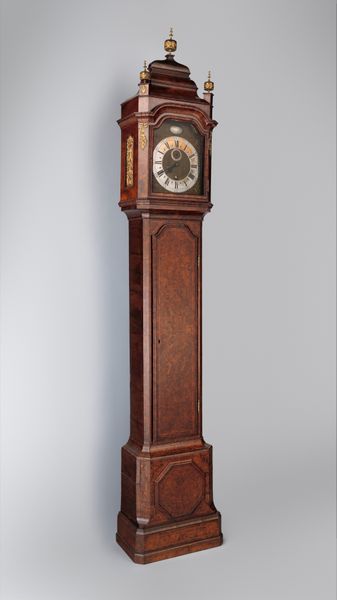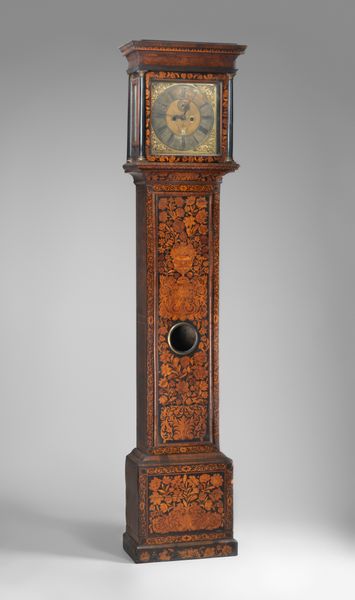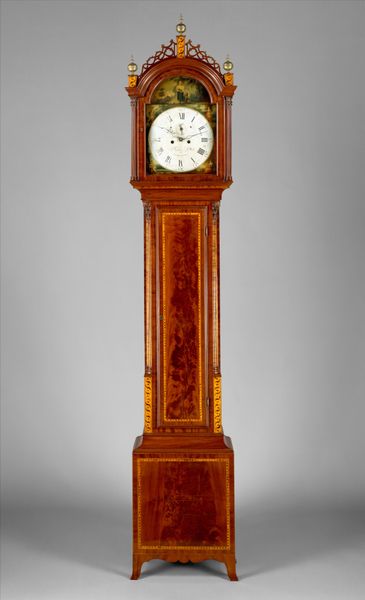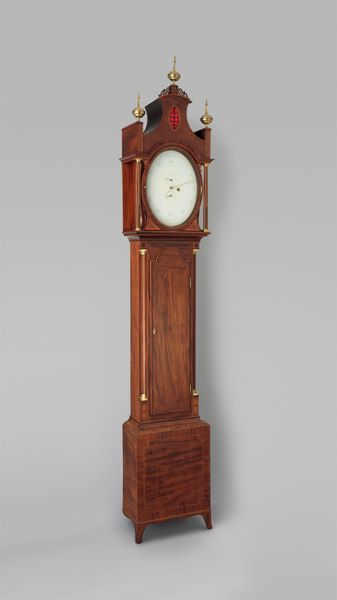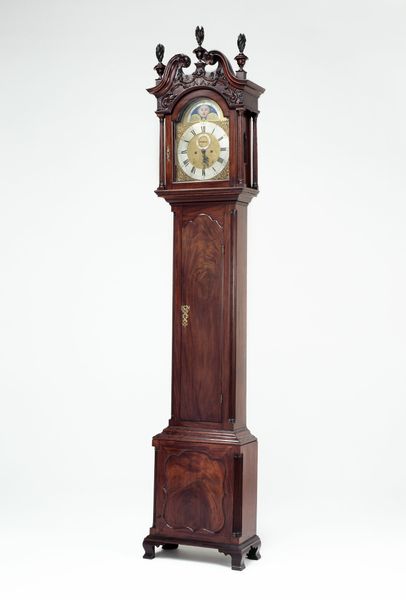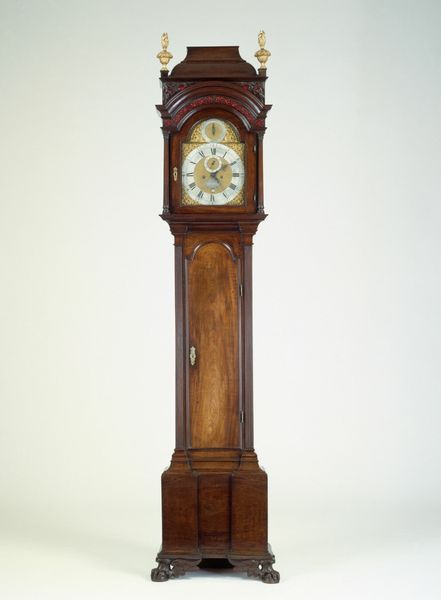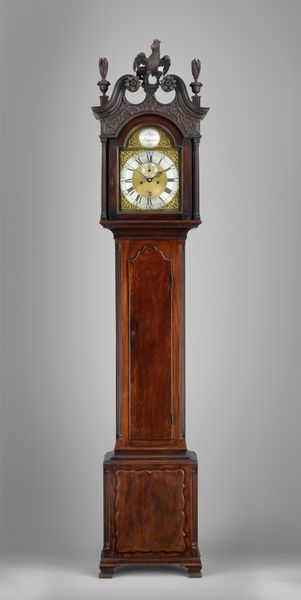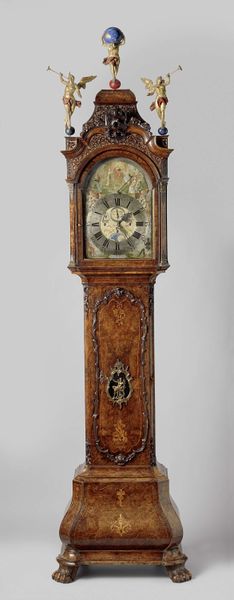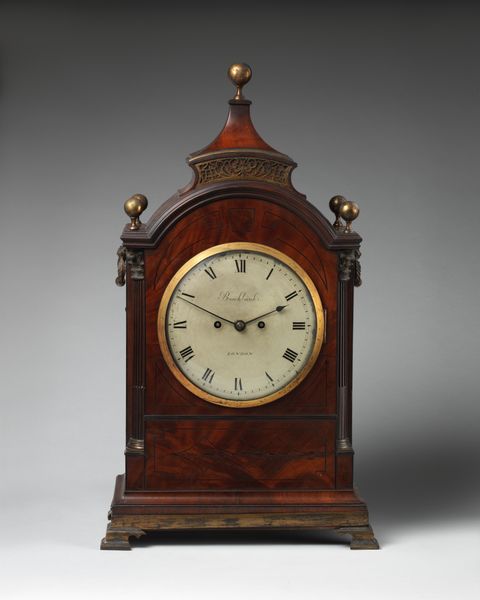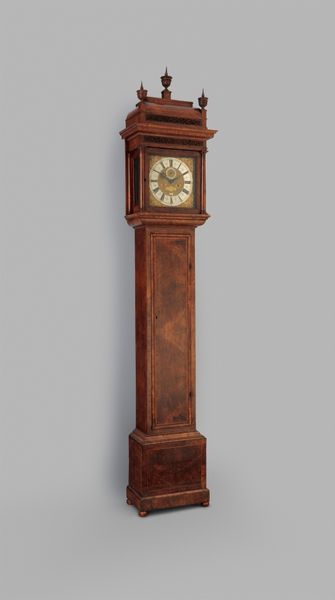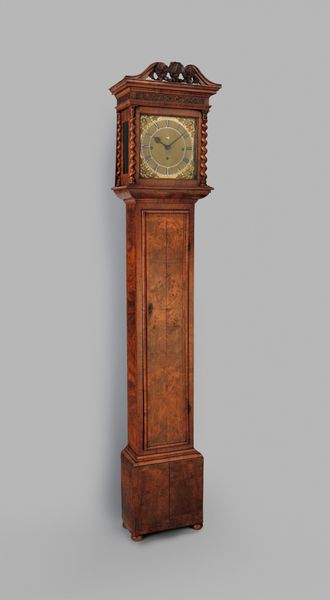
sculpture, wood
#
sculpture
#
15_18th-century
#
wood
#
decorative-art
Dimensions: 94 1/4 × 20 in. (239.4 × 50.8 cm)
Copyright: Public Domain
Curator: Editor: Okay, so here we have a longcase clock, dating from around 1775 to 1785, made by John Whitehurst. It's crafted from wood and currently resides in the Metropolitan Museum of Art. It feels almost monumental, but also very precise in its construction. What’s your take on a piece like this? Curator: Immediately, I’m drawn to the labor embedded in this object. Think of the mining and transport of the metal for the clock’s movement, the felling and milling of the timber, the skilled handwork of the cabinetmaker creating these decorative veneers and inlays. The contrast between the base ornamentation and the more streamlined central area is so interesting, no? What do you think that might tell us? Editor: Well, the base seems like pure decoration, almost exuberant, while the central panel with the horse image seems more reserved, almost like a nod to a specific patron or estate? Is that the artist’s commentary on class differences, perhaps? Curator: Perhaps indirectly, but it also underscores the object's role as a status symbol. The materials and labor alone spoke volumes. Notice the intentional display of craft versus raw materials. Consider how it operated within a culture of conspicuous consumption, where every tick and tock was a testament to someone's wealth and control over time itself. Editor: That makes me think about who had the time, literally, to appreciate such a thing. The labor embedded within is immense, a real contrast to its function as a time-telling device for those who weren’t engaged in manual labour. Curator: Precisely. It also challenges our modern idea of art needing to be “useless” to be high art. This clock merges incredible craftsmanship with functional purpose. It reminds us of a time before the rigid separation of art and craft that we often impose. What are your lasting thoughts? Editor: I guess I’ll never look at an antique clock the same way again. I never considered the actual physical means of making this clock! Now it tells me a whole new story about time, labor, and class. Curator: Indeed, objects like these hold a microcosm of social and economic history if we just learn how to read their materiality.
Comments
No comments
Be the first to comment and join the conversation on the ultimate creative platform.
